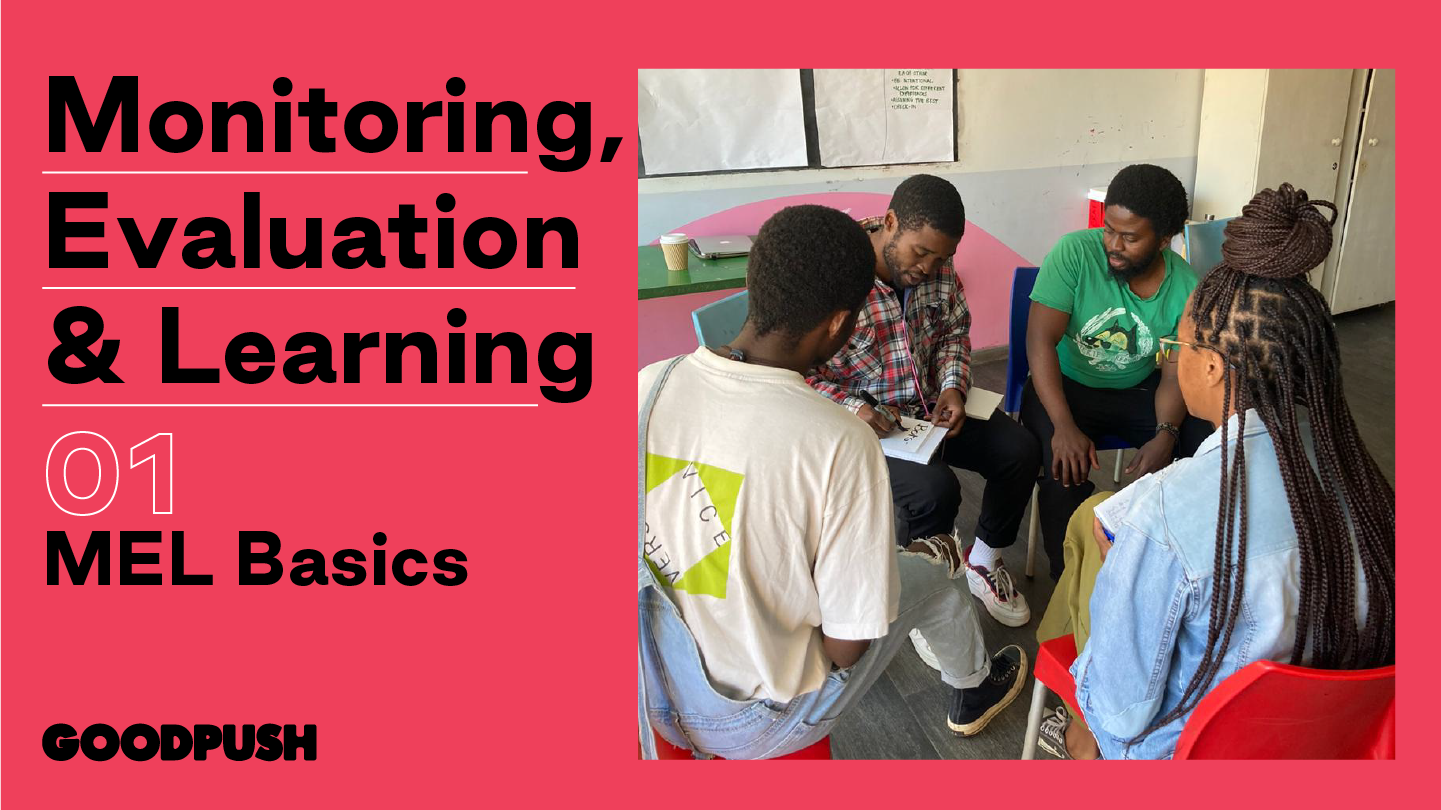Monitoring, Evaluation and Learning (MEL)
What is “Monitoring, Evaluation and Learning” (MEL)?
If you’re new to MEL, the good news is that you are probably already doing some kind of MEL, you just haven’t realized it yet. This toolkit provides an introductory overview to a very big topic, with resources for further learning at the bottom.
Monitoring – How you know your programs are happening the way you planned.
Evaluation – How you know the quality is good and your programs are achieving what you want to achieve.
Learning – What can we change or do better based on the new information we have?
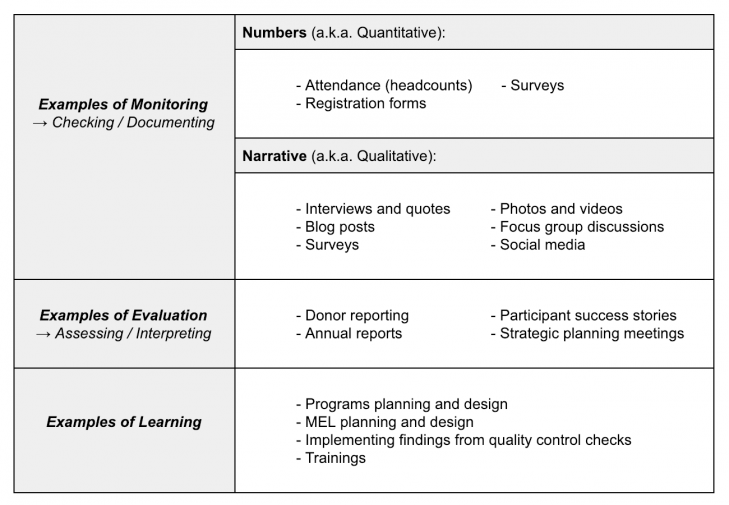
An important element of MEL is Accountability, which means doing what you say you’re going to do. There are three main groups that non-profit organizations have to consider:
- Accountability to the participants & community
- Accountability to the organization (board, staff)
- Accountability to donors
Why does MEL Matter?
- Quality: To provide the best possible programs
- Proof: To prove that your creative idea really works!
- Money: To meet donor expectations and attract future funding
Often MEL comes off as very technical and boring, so people avoid it.
But… Everyone should care!
MEL is the way that we ensure that we are doing good work, and lets us prove it to others
- It helps to identify trends (both positive and negative) in order to make significant changes or improvements in the programs.
- It’s a process of reflection – helping staff/teachers to feel more connected and involved in the impact of the program, and to see the results of their work.
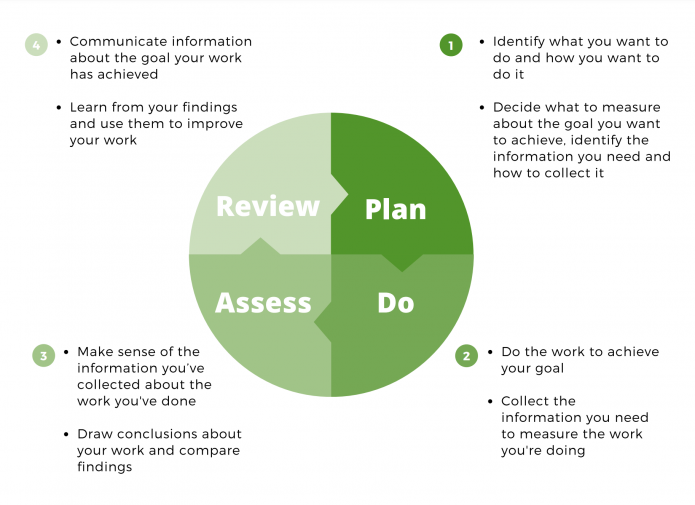
Good MEL is an ongoing process, not just a donor reporting cycle.
Ideally you integrate it within programs from the start, so it's done on a regular basis and can then easily be compiled and put into reports (rather than trying to gather data under time pressure)
Most Common Monitoring Tools
Attendance Records (headcounts)
Simplest way to start gathering data. Try to collect not just overall number of attendees, but also information on gender, disability, etc.
Registration Forms
If you have the same participants coming to your activities regularly, it makes sense to have them and their parents/guardians fill out a registration form. This allows you to collect key data on who your participants are, as well as include a “skateboard at your own risk” waiver and permission to appear in media associated with your project. Take a look at our Participant Registration Form example for skateboarding/sports projects.
Surveys
- Surveys are a type of monitoring – one of the most common
- As an example, Skateistan surveys a sample of its students for each program/location once per year, which feeds into donor reporting, annual report, social media and website.
- You can also use surveys for collecting educator feedback, assessing trainings, staff reviews
- It’s also useful to do a survey whenever starting a new activity or program. This is called a baseline.
- For projects with an end-date (not ongoing) you can also do a final / endline survey, or otherwise run an annual survey to track progress.
Check out this example survey for skateboard project participants, and feel free to adapt it into a survey for your own project!
It’s good to do a mix of quantitative and qualitative monitoring, because if you see a trend in the numbers you can find out some of the reasons WHY.
About Logical Frameworks (a.k.a. Logframes)
A logframe is a visual tool for improving the planning, implementation, management, monitoring and evaluation of projects. A logframe shows the links between the project activities and result. It is one of the most common MEL tools, especially for reporting to institutional donors (ie. governments, foundations). Another popular MEL framework is called a Theory of Change, however to keep this overview short we’ll just look at logframes for now.
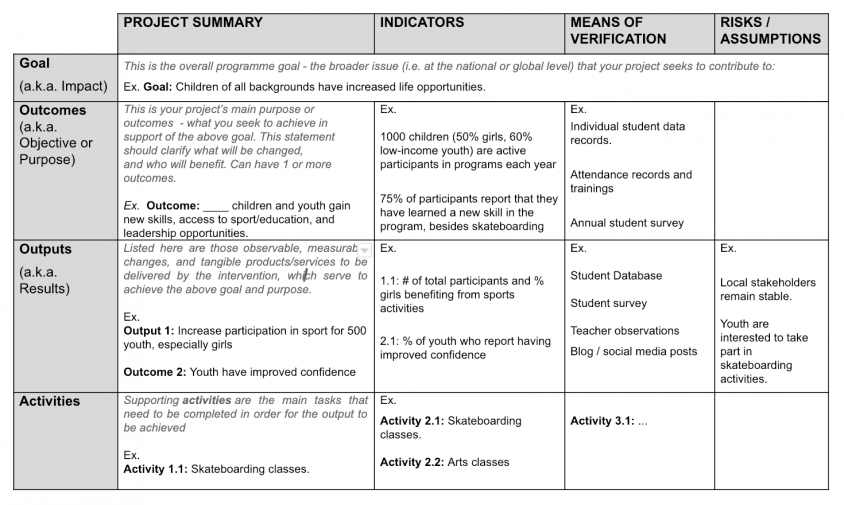
Example logframe for a skateboarding project.
What are logframes and why are they important?
-
IDEAL: Help you to design programs by making a visual overview of the logic of your goals, activities and MEL → logframe should be flexible and updated frequently.
-
REALITY: Many donors require a logframe as part of the application process → most require you to do in their own rigid format, and becomes an unchangeable standard against which your program is assessed
- These have varying levels of complexity, but if you have a basic version (like this free logframe template) you can always adapt this as needed for donors
- Logframes can be structured differently and terminology differs slightly with every single donor, so check this before submitting application
Using logframes for Program Design:
- In theory, writing a logframe should make it easier to plan and manage a project as you can see the sequence in which the actions lead to your overall goal.
- Requires you to look at your program not only top-down, but also bottom up: activities → outputs → outcomes → goal
- It’s best to write the logframe with everyone who might be involved in the project, but this can be difficult to organize
- Instead, you can organize a workshop with participants, community members, staff, volunteers and ask the following questions:
- What should/will we achieve? What activities should/will we do? What resources, people, equipment needed? Potential problems? How to measure success?
- As a starting point however, the main staff of a project can come together and draft a logframe for their programming.
- Instead, you can organize a workshop with participants, community members, staff, volunteers and ask the following questions:
A standard logframe is divided into four rows, which are your long- to short-term objectives ranging from top to bottom. Since the terminology used in logframes can differ between organizations, multiple terms for each are outlined below:
- Goal/Impact: Big picture and long-term (ie. To improve health and well-being for Afghan children)
- Outcome/Purpose/Objective: How the goal/impact will be achieved (ie. Increased access to safe recreational spaces)
- Outputs/Results: Quantity, quality and timeline of results that the project has. These are usually things you can count when you are running your activity (ie. Number of skate sessions delivered)
- Inputs/Activities: What activities are you delivering to make the program happen?
These are achieved and measured by the headings from left to right:
- Project summary: Where you write the details
- Indicators: How you’ll measure the progress you make towards the outcomes and outputs
- Means of verification: How you’ll collect the information for the indicators
- Qualitative / Narrative: Better at answering how and why (open-ended questions)
- Quantitative / Numbers: Better at getting statistics (close-ended questions)
- Risks and assumptions: external conditions needed to get results
Tip: It's often more useful to work backwards when making your logframe – start with the impact and move backwards/down towards your inputs to make sure everything connects.
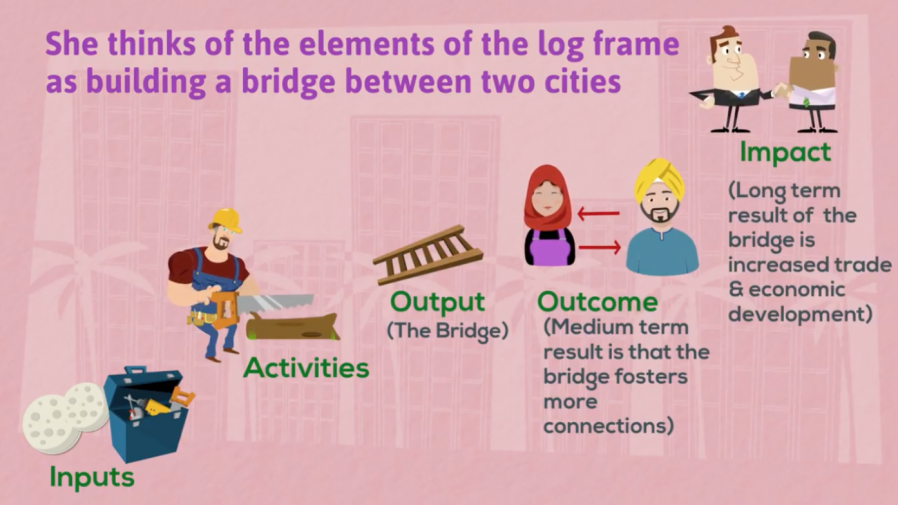
This bridge analogy helps to understand logframes (Source)
Next Steps
MEL can be overwhelming – there’s always more to do and learn – but just get started with the activities you have the time and resources to do, then build it up as you go. A first step can be to identify which MEL activities your project is already doing, and which new activities would be the most useful and achievable for your context and with your capacities.
-
“So what” factor -- we’re teaching kids to skateboard… so what?
-
Think about what your project aims to achieve (impact) - this might be quite broad, such as "improved quality of life" or "better education" or "healthier children" but will help guide you to think "how will we get there with our program?"
-
-
Make a list of the MEL activities you are already doing. This can be written into a short paragraph to provide to supporters.
-
Choose ONE new MEL activity to start doing. Take a look at the MEL resources section for a sample attendance sheet, a sample participant survey, and logical framework templates.
-
Learn more! This overview only touches on the very basics of MEL. There are TONS of resources about MEL for non-profits, so check out more stuff on your own, or do our new (and free) Goodpush MEL Basics E-Course!
